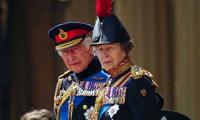KARACHI: Mobilink Microfinance Bank Limited (MMBL) Chief Executive Officer (CEO) Ghazanfar Azzam says the future of digital banking model is bright, but it is linked to bringing more and more people round to using e-services comfortably.
Azzam expressed these views in an exclusive interview with The News.
Here are the highlights of that enlightening talk.
Q: Did MMBL see a shift in customer behavior after COVID-19 breakout?
A: Digital banking has been operational in Pakistan for quite some time. However, the ongoing pandemic has played a pivotal role in further shifting the mindsets of our banking customers towards going digital. The findings from one of the first digital banking experience surveys in Pakistan- Banking in the Digital Age: Exploring Pakistan’s Potential, conducted by A.F. Ferguson & Co. (A member of the PwC Network), re-affirm the increasing customer inclination towards convenience & personalised banking made possible through digitisation. The survey highlights that 82 percent of all consumers visit their physical bank branches once in a few months or only visited them once to open their accounts. Instead, 67 percent and 55 percent of the people prefer to use mobile and internet banking respectively to fulfill their banking needs.
The first wave of the COVID-19 virus, along with the total lockdown that followed, brought life to a standstill and made Pakistani consumers realise the importance of mobile wallets and internet banking. This also allowed us to leverage our resources as a digital bank and multiply our realm of online services. Our mobile wallet JazzCash saw 52 percent year-on-year (YoY) growth in terms of overall transactions with 1.1 billion plus transactions worth over $12 billion processed in 2020. The application witnessed 180 percent YoY growth and over 110,000+ Payoneer accounts were linked with it. Moreover, 2,300 plus direct and indirect jobs were created by JazzCash last year.
Q: Do you see the digital banking model sustaining itself in the future, considering only 21 percent of adult Pakistanis having a formal bank account?
A: Although Pakistan is mainly a cash-based economy, behaviors are changing and it cannot be denied that the future is digital. Mobile and internet penetration in Pakistan is growing exponentially – more than 83 percent of our population uses cellular phones and half of them (42 percent+) are 3G/4G connection users. This shows a strong inclination of our masses towards digital services. Also, the government and other respective authorities are cognisant of this trend and have continuously introduced plans and ideas to facilitate the digital shift such as Raast, PayPak, and Roshan Digital Account to name a few. So, yes, I do see the digital banking model sustaining itself in the future. However, it is imperative to provide adequate guidance and training to the masses to make them comfortable in using e-services such as digital banking. Private players in the banking sector, along with SBP, should collaborate to enhance digital accessibility for the masses.
Q: Can you please share the innovative solutions your bank has introduced or is working upon?
A: More than anything, 2020 has shown how the banking industry can respond to challenging situations with agility and innovative thinking. Going forward, these qualities will become increasingly significant as we seek to provide ever more personalised and inclusive digital experiences for our customers. MMBL recognises this need and is continuously moving towards complete digitisation of its operations. Using biometrically enabled hand-held devices, MMBL is onboarding customers and offering asset and liability products without the need for a single sheet of paper through using secure digital signatures.
Q: Is MMBL offering any specific female-centric products? Also, in line with SBP’s recent draft policy, what are some of the measures your bank is taking to ameliorate female engagement in its branches and enhance the financial literacy of the masses, in general?
A: Almost half of our country’s population comprises women and they significantly lag behind men in terms of financial inclusion and contribution to economic activity. We have to cater to this untapped pool of our potential target market to achieve sustainable national progress. One of our major priorities at MMBL, therefore, is to engender equality in banking practices and reduce the gender divide in financial inclusion. Currently, 157,494 out of 826,843 of our borrowers are women. Moreover, MMBL has a Gross Loan Portfolio (GLP) of over Rs25 billion, out of which over 20 percent is loaned to women micro and small entrepreneurs. We aim to increase this number greatly by adding more inclusive products to our portfolio. An example is our product Bint-e-Hawa which is a female-centric deposit offering exclusively for women ranging from housewives to salaried professionals and entrepreneurs. The account comes with a free cheque book, a free customised ATM Debit Card, very attractive profit rates, and many other benefits.
We are also actively partnering with like-minded organisations to digitise payments and raise awareness regarding fintech solutions for women. Under SBP’s National Financial Literacy Program for Youth, MMBL has achieved its targets commendably and recorded female participation of over 51 percent in several capacity building and awareness sessions for the masses.
We also have female representatives at most of our branches to help facilitate financial inclusion for all women. More than 150 female staff members are now employed at MMBL, with over 80 individuals placed across our branches, for catering to the needs of female customers and meeting women in rural areas to educate them about the importance of availing financial services.
Sheikh argued that the government should have maintained stable petroleum prices
MARI has successfully drilled and tested the third appraisal well in the Ghazij formation in the Mari D&PL
Gold rates decreased by $17 to $2,395 per ounce in the international market
Company's revenue saw a 13.9% year-on-year increase, reaching Rs49.2 billion, up from Rs43.19 billion in the same...
A man counts US dollars in a money exchange shop in Dhaka. — AFP/FileLAHORE: The first thing that the government...
Power generation stood at 8,741 gigawatt-hours or 11,749 megawatts in March







